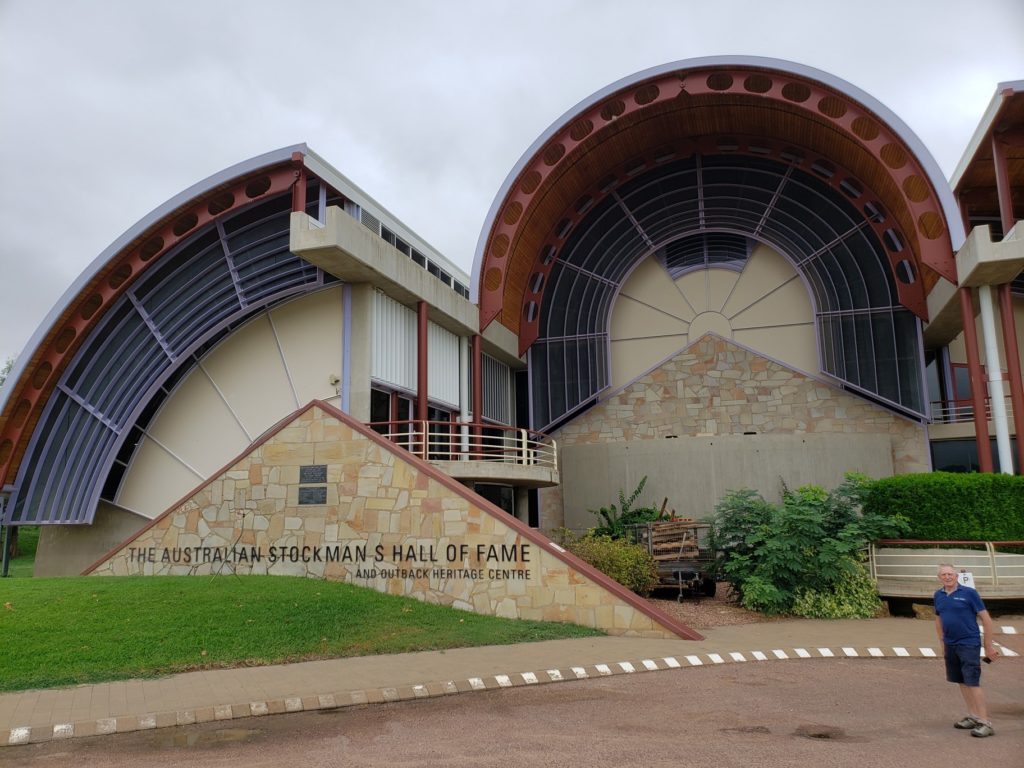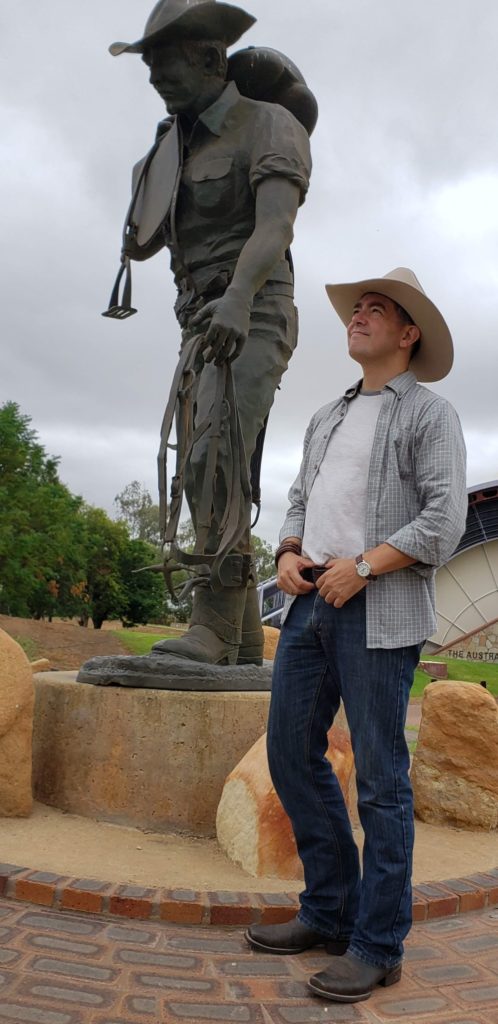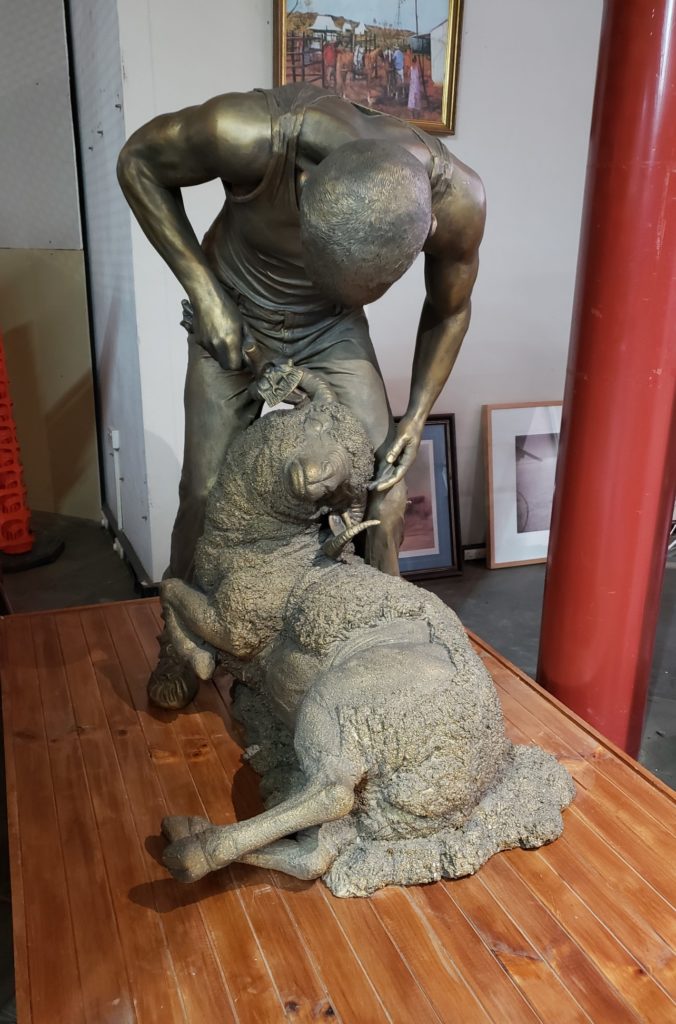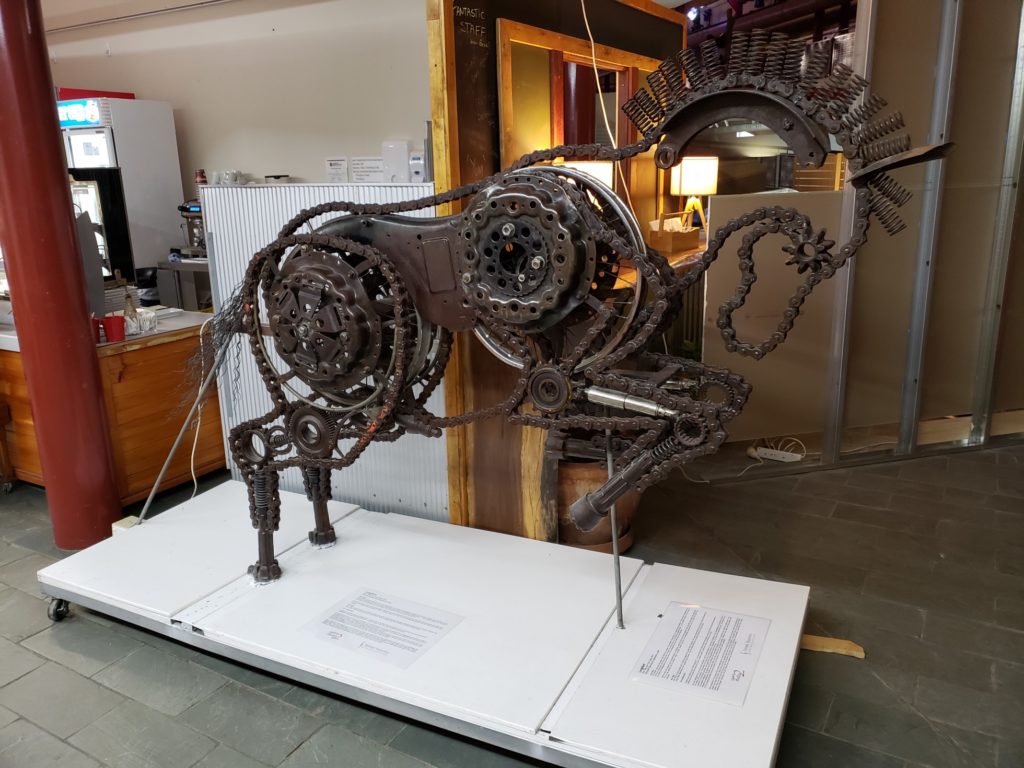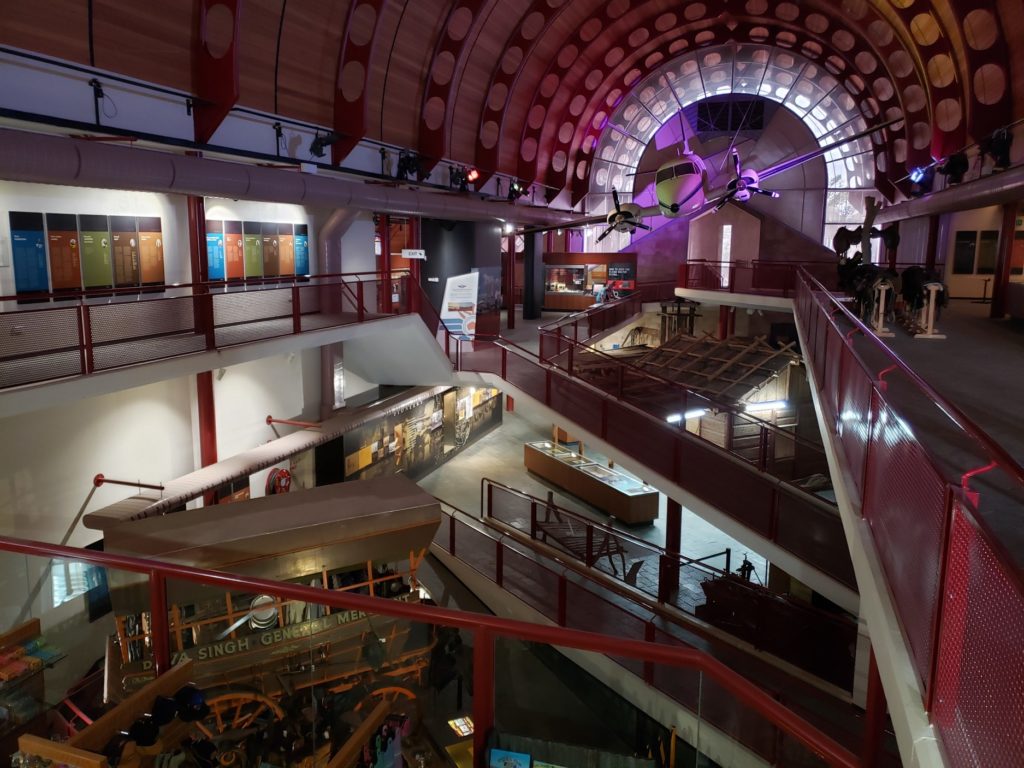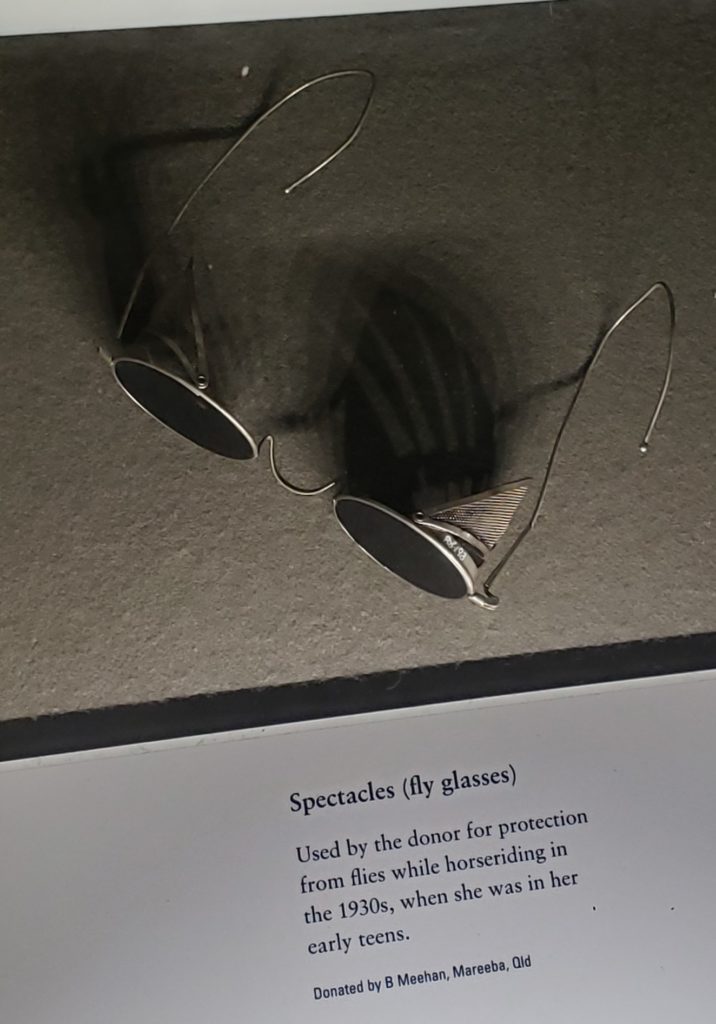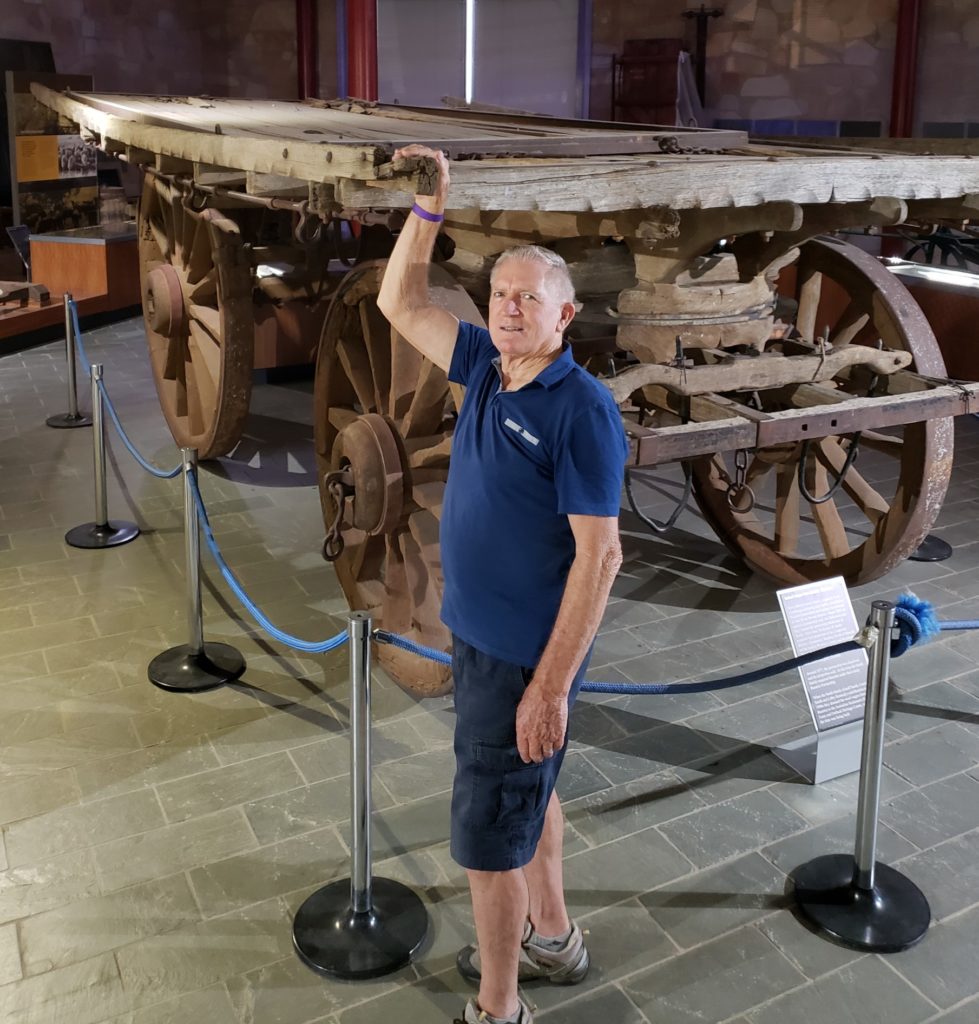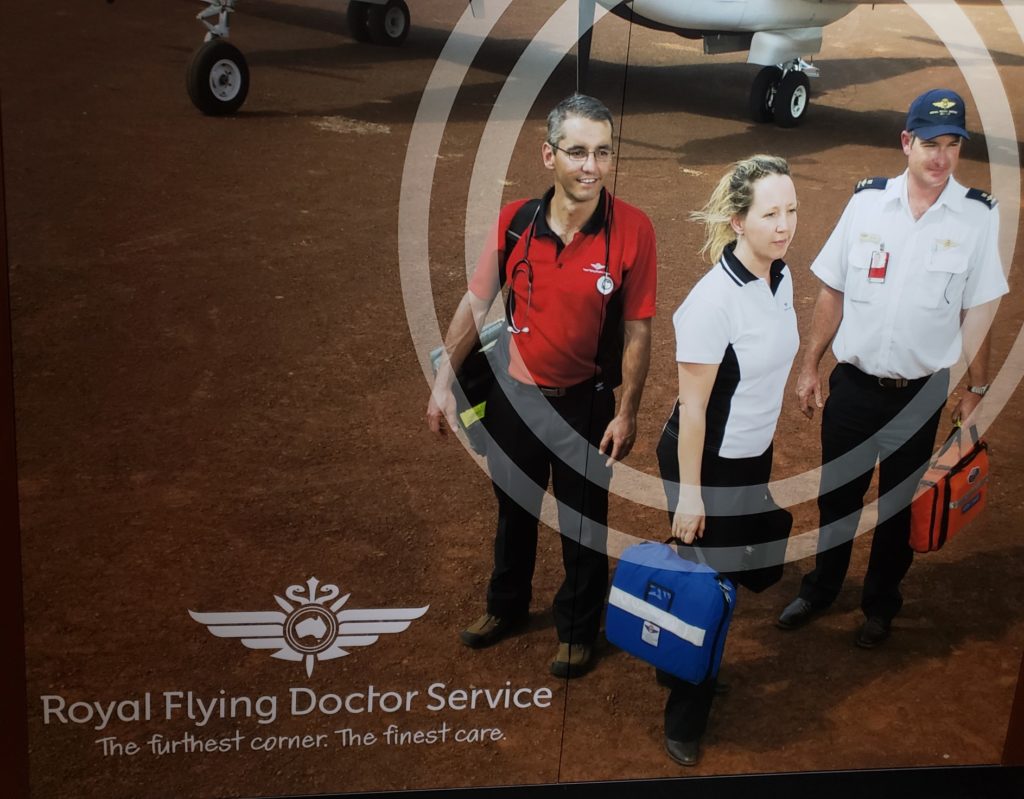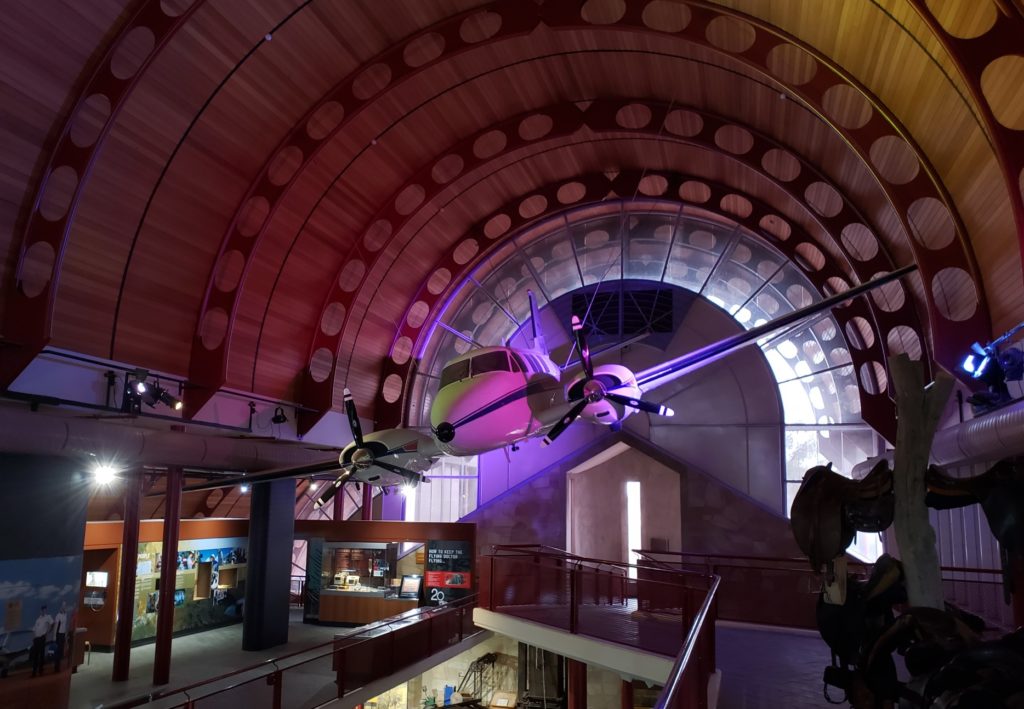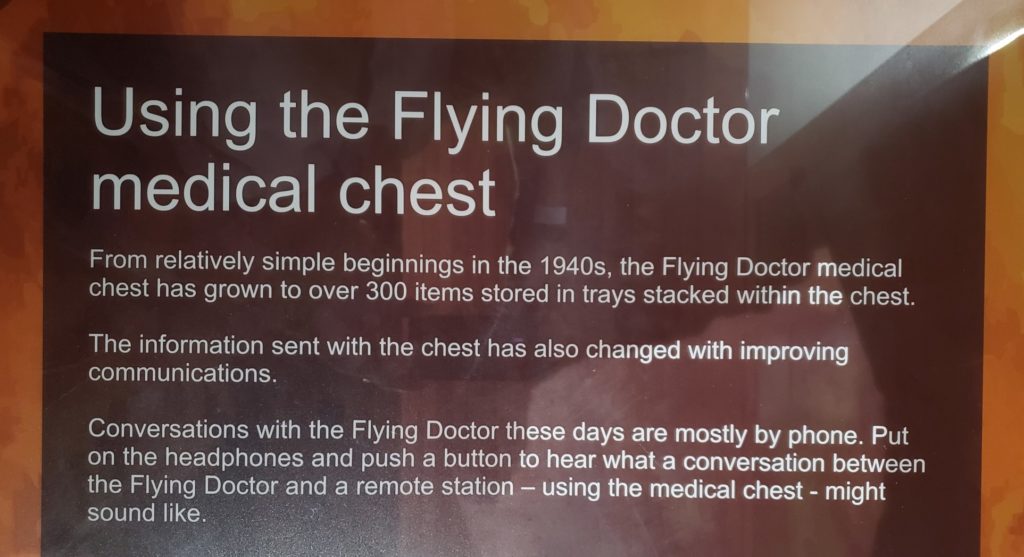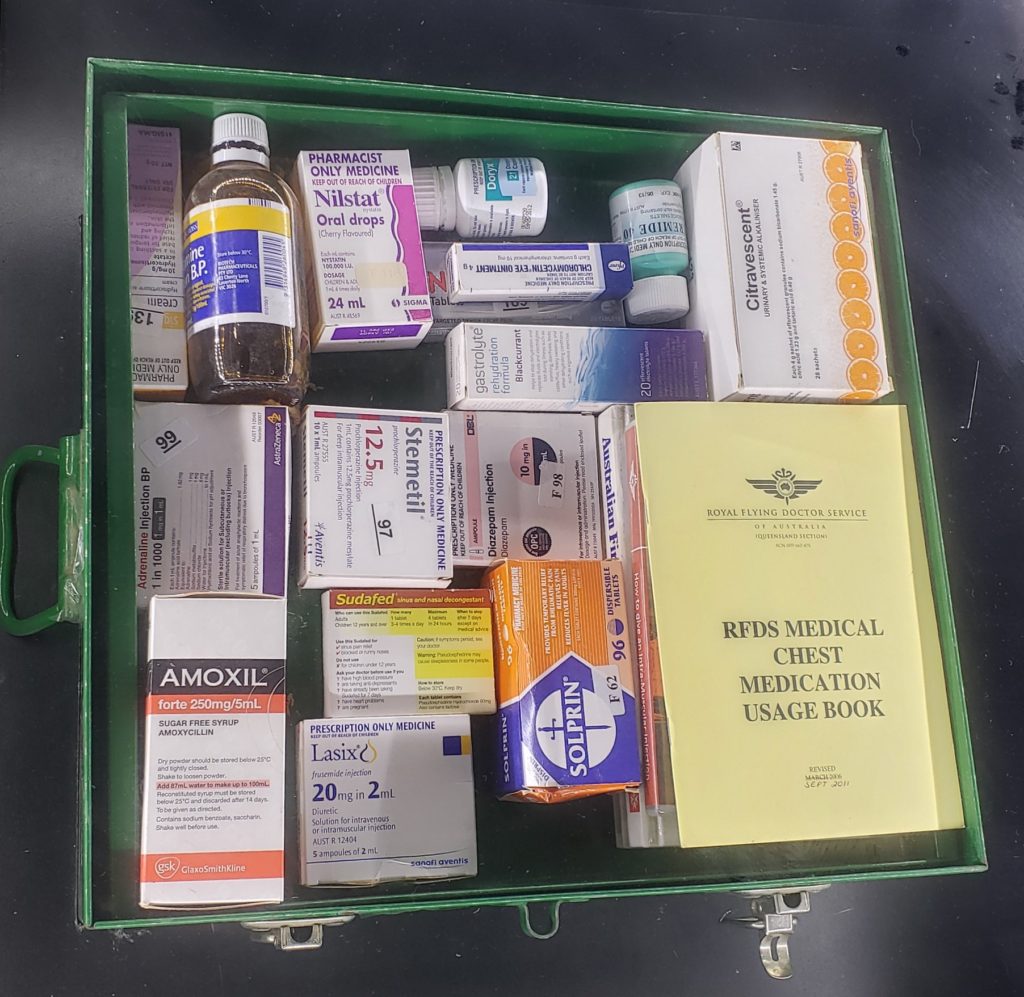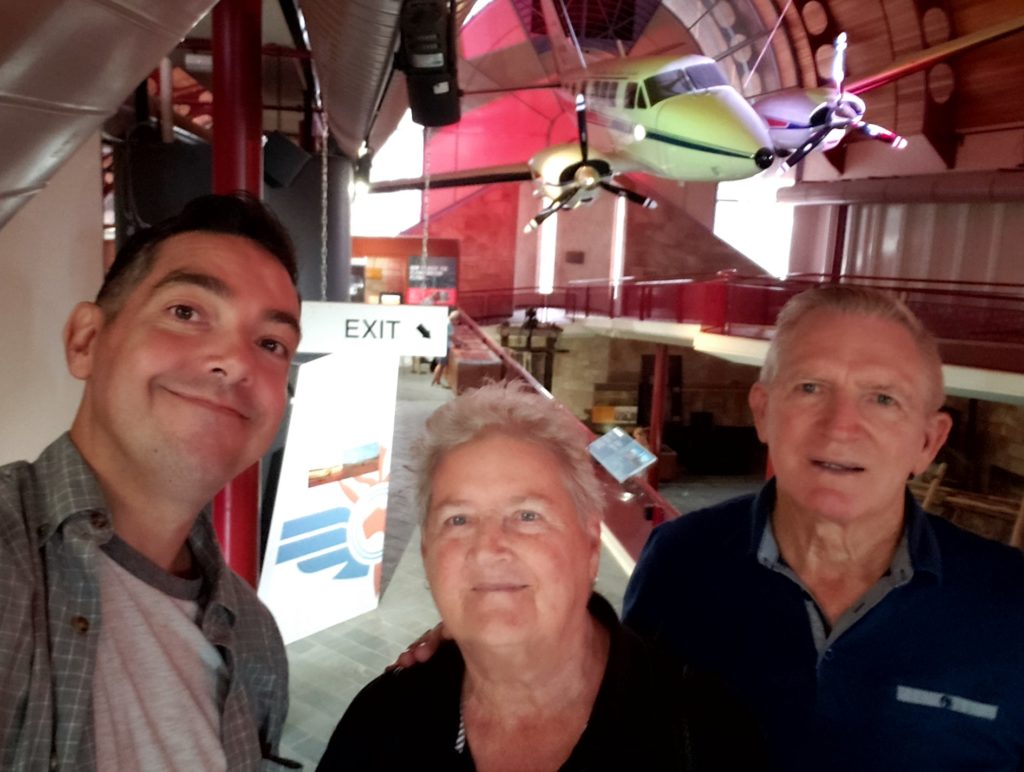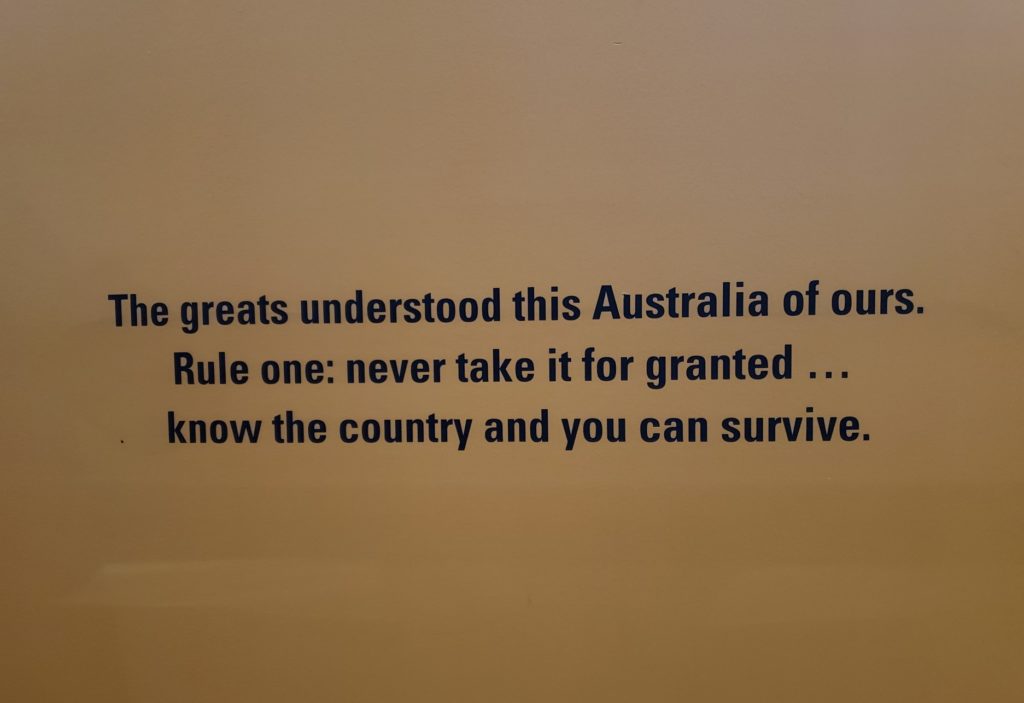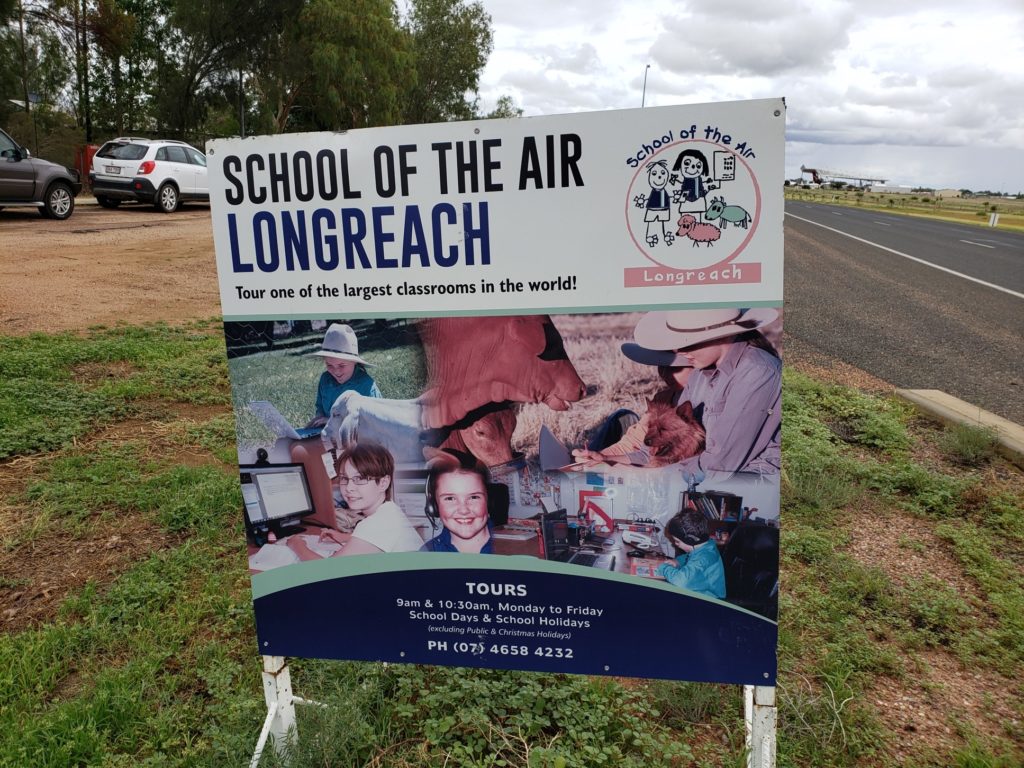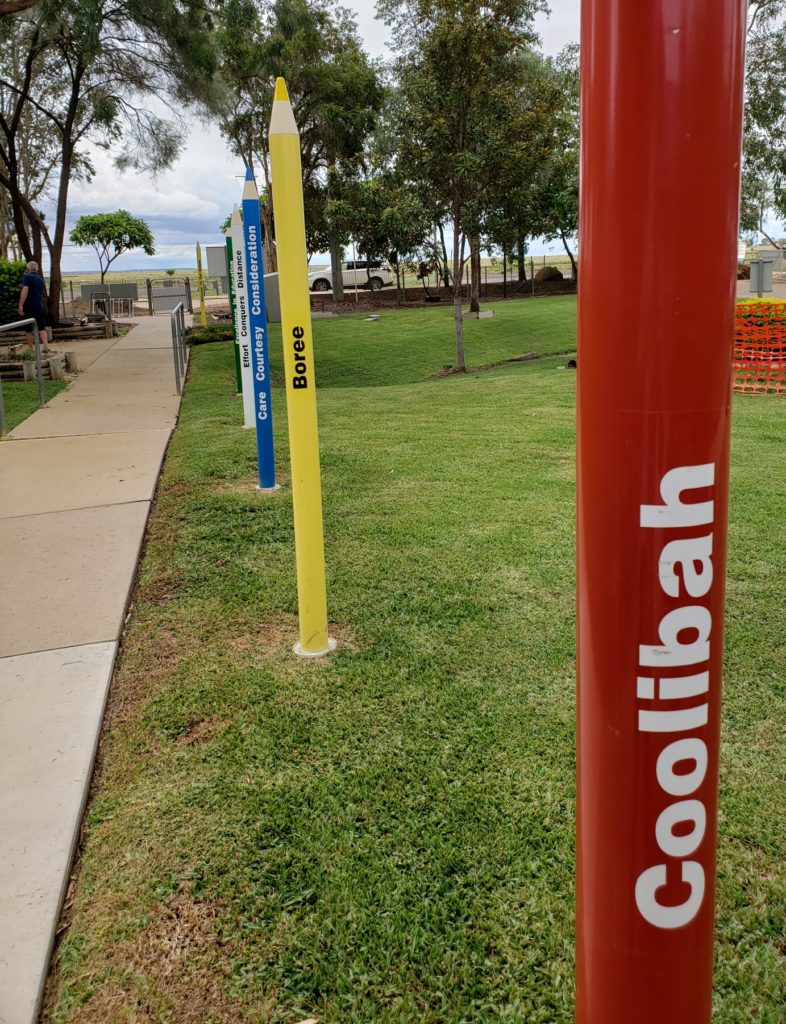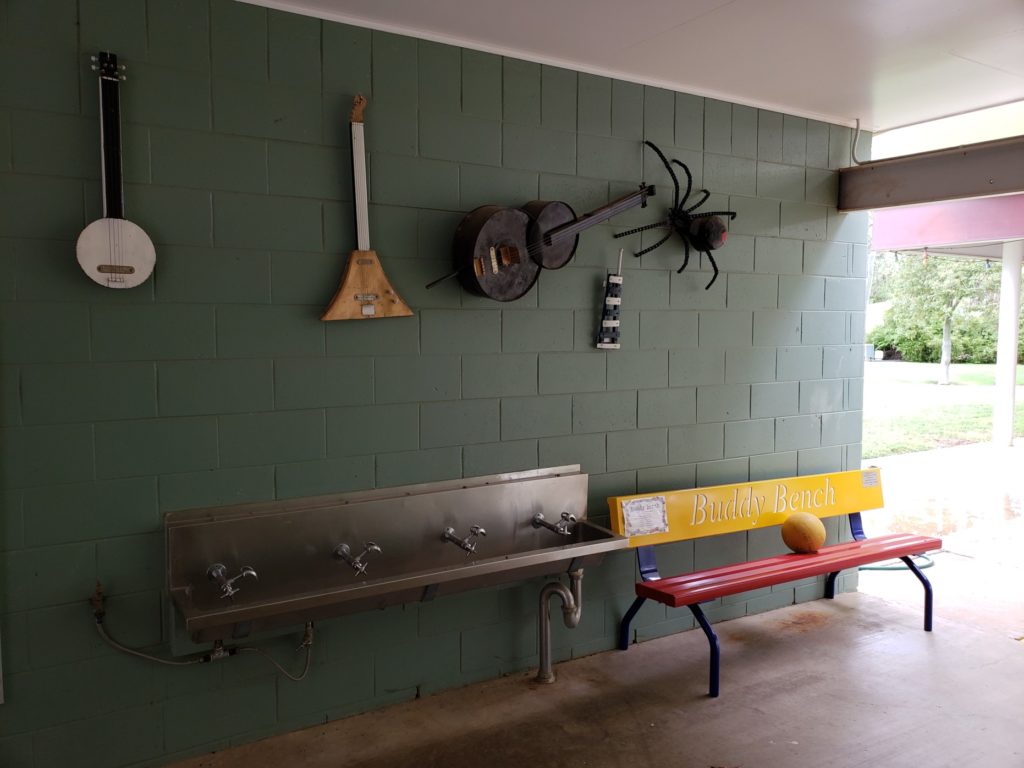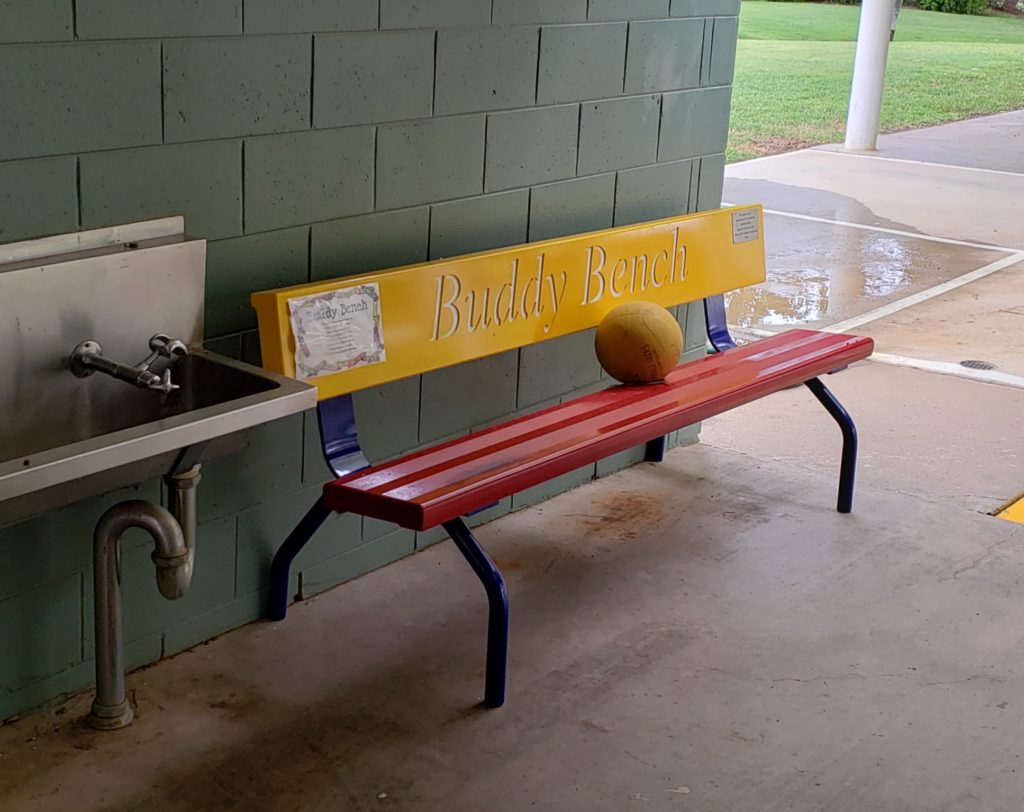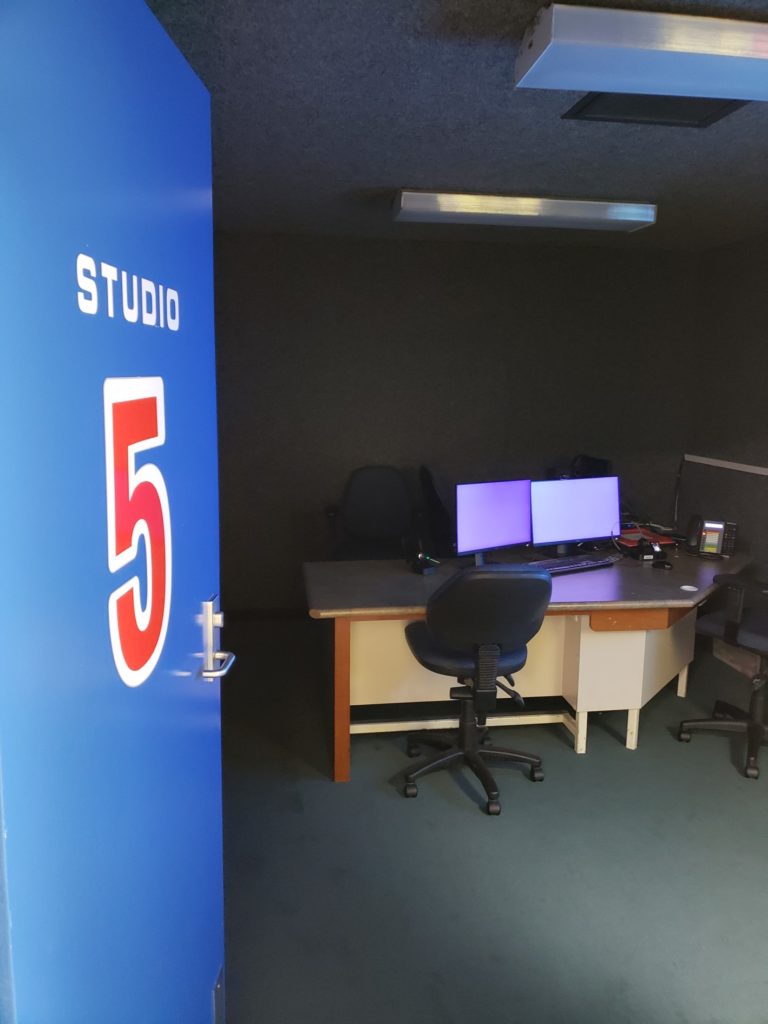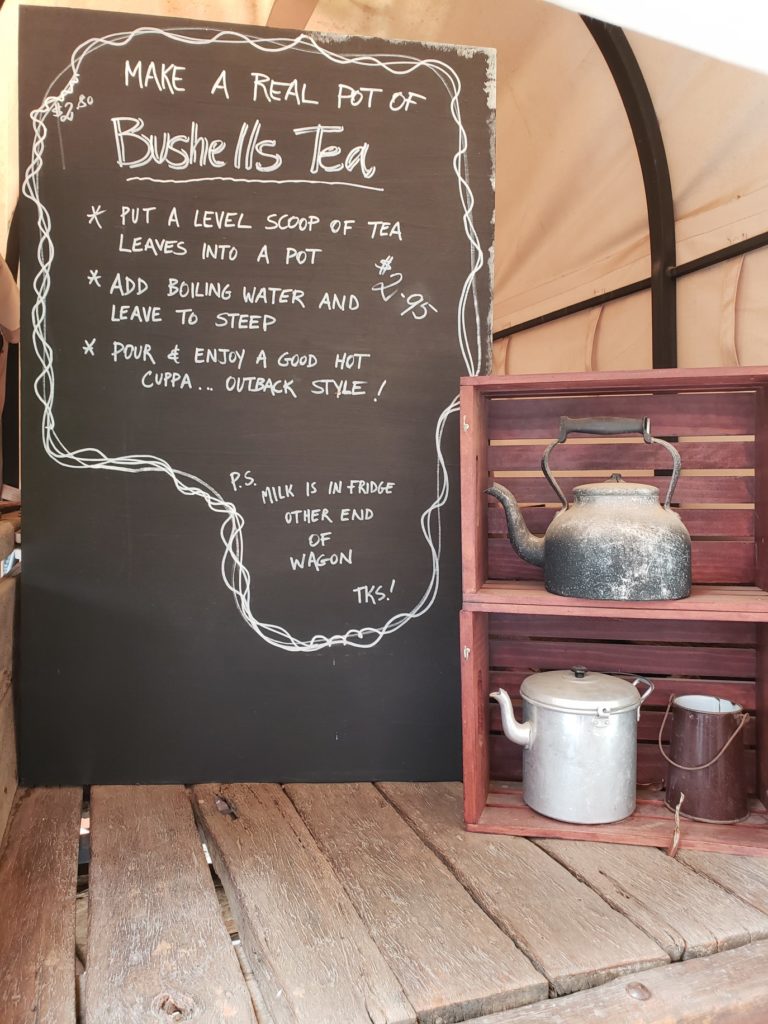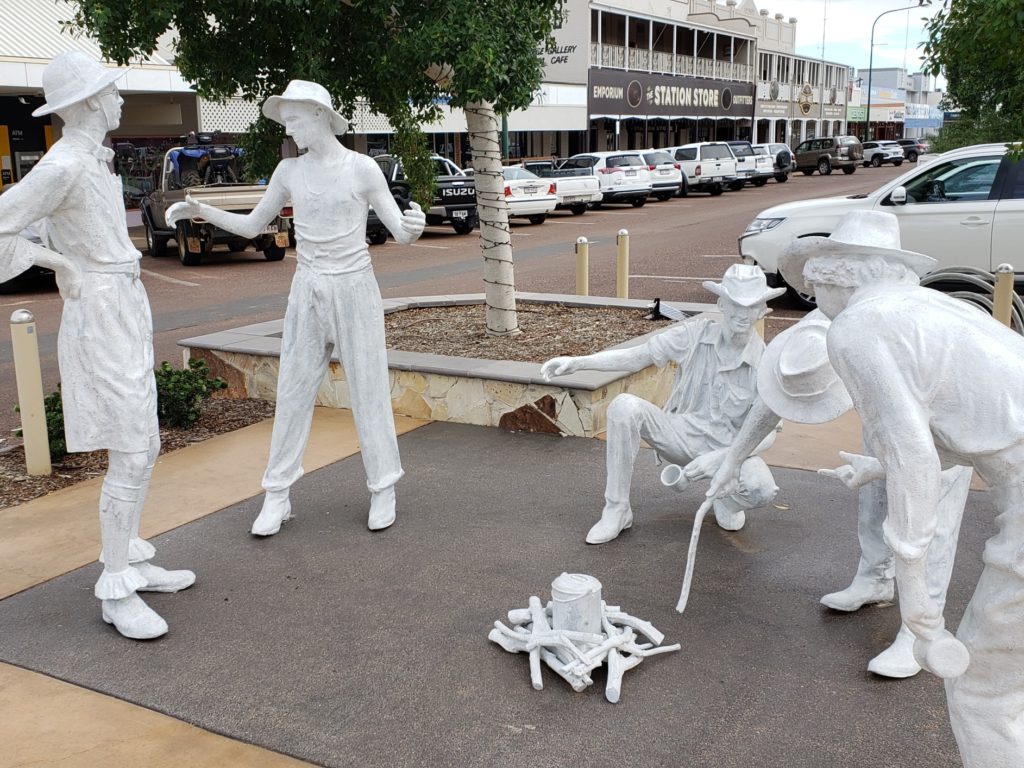
Peter and Carolyn wanted to go and visit the Stockman’s Hall of Fame. This initially failed to elicit excitement as it sounded like a place focused on cows and farming. These are two things not generally seen in Michael Bay movies and not typically classed as exciting. In addition, this trip was already going to cost quite a bit given the several nights in hotel rooms, and I wasn’t sure I wanted to spend the thirty dollars to get in. But there was little else to do, and I was in need of a misadventure, so off we went.
Fortunately it turned out to be quite interesting.
Opened in 1988, the stated purpose of the Hall of Fame was to honor the pioneers, explorers, and settlers of the Australian Outback; so in many ways it was a historical museum. We got our picture with “The Ringer”, the iconic bronze stockman statue that was synonymous with the building, before going in. The building itself was actually under renovation, being as this was the off season, and so by way of apology they let us in for free. There were five main sections. The first covered the contributions of Aboriginal stockmen and laborers, including information about Aboriginal rights activist Vincent Lingiari and the Gurindji strike in 1966, which was a key moment in the struggle for Aboriginal land rights. The next section gave a glimpse into Outback living with a settler’s cabin, homesteader wagon and various farming and daily life implements, and a third which dealt with agriculture, pests, and natural disasters.
A fourth explained the history of The Royal Flying Doctor Service. In remote areas of the Outback, ambulances aren’t exactly practical as the trip to a hospital may take many hours. In the early part of the twentieth century an aeromedical service was experimented with, and later fully embraced as the standard for effectively treating those in isolated areas. The “Flying Doctor” is a non-profit service that flies doctors out to isolated homesteads to provide care for patients and fly them to hospitals if needed. To reduce the necessity of flying supplies out for every call, people on remote catlle stations were given a human anatomy chart and case of medical supplies. The homesteader would reference that chart to let the doctors know on the phone what they were physically experiencing and then instructions would be given as to what from the kit should be used, and how, in order to treat the malady or injury. An actual VH-FDS Beech 65 Queen aircraft hangs from the ceiling in the grand archway, the same type originally used by the Flying Doctors. It’s a common thing to see donation canisters on counter tops at shops throughout the country soliciting donations to support this noble cause.
The final section we saw dealt with Riding, Roping, poetry, and art, though these may have been two sections, honoring the rugged stockman who did the mustering and still do. There was actually a live show as well, featuring a display of wrangling and various animals, but that was not available while we were there.
We stopped in to the gift shop and bought some post cards and souvenirs, including small, hand-cranked music boxes featuring various tunes, as well as grabbing a snack. I confidently ordered “a ham and cheese toastie with a flat white coffee”, having learned my lesson in Sydney. Then we left.
On the way in to Longreach the day before, I had a seen a sign for the “School of the Air”, and now as we passed it, I asked if we could stop and get a picture of the sign. I had heard about this distance learning service while reading a book some years earlier, (page 268 in Bill Bryson’s In a Sunburned Country, if you want to know) and so I was excited to see one. Peter walked over the front gate and noticed that tours of the facility were available as well. So we went in.
The school itself was a single story building with a front walkway lined with giant pencils with various Aussie words, names, and slogans on them as well as various sculptures made by students. A tour guide met us at the door and ushered us in. We walked down a couple of halls, the walls of which were all covered with art projects done by the local students. We were taken to a classroom and through a window we could see a man with a headset teaching a class to a computer screen in the adjoining room. We saw an presentation video explaining the basic idea of the school and testimonies from various students as to the quality of the program. They were all kids who lived on farms and far off cattle stations, and each had a computer through which they would interact with their teachers. They even gathered for annual getaways and to meet other students. Each year they also performed a musical together and at one point Hugh Jackman, himself, appeared to encourage the performers. Essentially this was a correspondence school, but while these were originally done through two way radios up until the early 2000’s, now everything was done online.
Here in Longreach this was a functioning school for the local children with physical classrooms and a library. We went out into a courtyard to see the recess area. There were more artworks hung around, but also a “Buddy Bench”. The point of the bench was that if you felt lonely or weren’t getting invited to play with anyone, you could sit on the bench and it would be a signal to the other kids that you needed a friend to come and say hi or include you in something. If I recall, this was actually the invention of a student and was immediately embraced.
Nearby, on a piece of tin roofing, was the school slogan ‘Effort Conquers Distance’, and this was to be found on walls throughout the facility. There were studios with desks chairs and computers for the teachers to teach and broadcast from, complete with little, light up ‘On Air’ signs above each door.
We were asked not to take photos of anything featuring pictures of the students, for their protection and to maintain their anonymity. We were told that the program is government funded, but that contributions were always welcome and most helpful, and so we left a few dollars. Tim Craig had actually sold a trampoline and told me to keep the money he’d gotten for it, so that money now went into the donation box. It seemed fitting. A picture of the Queen was proudly hung next to the door as we exited. I’m still getting used to that.
We next went downtown and poked into a few shops after a mid day nap. One of these included a small rodeo area and movie theater with a sawdust floor and wooden pews. Another one sold kangaroo paw bottle openers, keychains, and an array of leather products. Near the center of the main drag was a grouping of white statues that comprised a single artwork entitled “The Drovers”. It was relocated from Brisbane to Longreach in 2018 and was quite interesting because the life sized figures were spaced in such a way as to allow one to walk about in between them and become part of the scene as they gathered around a small fire brewing Billy tea and chatting.
As a final side note, It’s interesting that during the several days we would be on this trip, not once would we eat out. This seemed to be the rule rather than the exception. It’s been ingrained in me, thanks to my family’s love of restaurants, that when on a vacation, you eat out for breakfast and at least one dinner. On a trip like this, therefore, I kept thinking we would end up at a restaurant at least once, but we never did. I can say that my wallet was grateful for this, but it still felt strange. So with this in mind, the day concluded with more Seinfeld and a generous order of fish and chips from the local servo!
